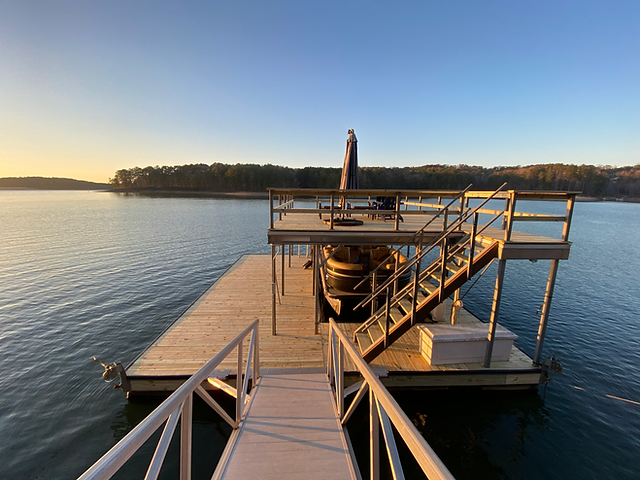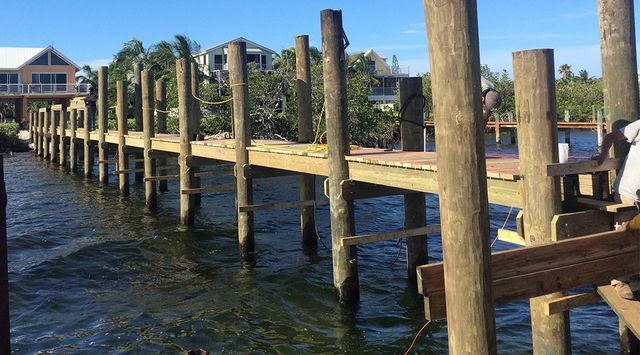Seasonal Preparations: When to Schedule Your Dock Repairs
Seasonal Preparations: When to Schedule Your Dock Repairs
Blog Article
Effective Dock Repair Work Techniques: Guaranteeing Structural Integrity
Ensuring the architectural honesty of anchors with efficient repair work techniques is paramount for the long life and safety and security of aquatic facilities. This involves a multi-faceted approach beginning with detailed evaluations using advanced modern technologies like finder equipment and from another location ran cars (ROVs) to spot both visible and hid damages. Subsequently, picking the ideal repair products, such as corrosion-resistant alloys and composite products, is crucial for longevity. Architectural reinforcement approaches, including the implementation of cross-bracing systems and load-distribution plates, play an essential function in mitigating stress factors. Nevertheless, the significance of these strategies becomes obvious when exploring innovative repair service methods and preventative maintenance strategies.
Analyzing Dock Damage
Analyzing dock damages is an essential initial action in making certain the architectural honesty and safety and security of any kind of docking center. Secret elements to analyze include the dock's foundation, pilings, outdoor decking, and equipment (Dock Repairs).
Architectural engineers or qualified inspectors typically perform these assessments making use of specialized devices and methods. As an example, undersea evaluations might employ finder devices or remotely ran automobiles (ROVs) to find submerged damage. Over water, aesthetic evaluations are complemented by making use of wetness meters and other analysis tools to reveal underlying problems not immediately noticeable to the naked eye.

Finding Repair Materials
Picking the proper repair work materials is a crucial action in the dock remediation procedure, one that straight influences the long life and efficiency of the repaired framework. Material selection need to be driven by aspects such as environmental problems, load-bearing demands, and compatibility with existing dock parts.
In enhancement to wood, composite products are progressively popular as a result of their toughness and low upkeep demands. Compounds, normally made from a blend of plastic and timber fibers, provide superb resistance to rot, bugs, and UV damage. For steel docks, picking corrosion-resistant alloys such as galvanized steel or marine-grade light weight aluminum is necessary to protect against rust and ensure architectural integrity in saline water problems.
Epoxy resins and marine-grade sealers are important for fixing cracks and sealing joints, supplying a waterproof barrier and improving the dock's total strength. By carefully choosing high-quality materials, dock repair services can attain lasting results, therefore safeguarding against future deterioration and making certain safe, dependable use.
Structural Support Strategies
Reliable architectural support techniques are crucial in making sure the security and long life of dock fixings. One fundamental method involves using steel or composite reinforcement bars (rebar) within concrete structures. Rebar offers extra tensile stamina, protecting against splits and distributing loads a lot more equally. This approach is particularly effective for docks revealed to hefty loads or harsh environmental conditions.
One more vital strategy is the application of fiber-reinforced polymers (FRP) These materials offer high strength-to-weight ratios and superb resistance to corrosion, making them perfect for strengthening concrete or wood docks. FRP can be applied in sheets or strips and adhered with epoxy materials to enhance architectural integrity.
Bracing and securing systems likewise find this play a crucial role in structural reinforcement. Cross-bracing, using steel or wooden light beams, can neutralize lateral pressures, minimizing swaying and activity. Anchoring systems, such as helical piers or driven heaps, offer a secure foundation by moving tons to much deeper, much more secure soil layers.
Last but not least, the combination of load-distribution plates can aid distribute weight extra uniformly throughout the dock's surface, alleviating localized anxiety factors. These methods jointly ensure that anchors continue to be safe and robust, qualified of enduring the roughness of their functional environment.
Advanced Repair Service Methods

An additional advanced technique involves underwater welding, which enables repair work to be carried out without the requirement to dewater the location. This approach is specifically useful for addressing structural issues in submerged dock parts, ensuring minimal disruption to operations. Enhanced welding techniques, paired with robotic systems, supply accuracy and reliability, thereby extending this page the lifespan of the dock.
Furthermore, cathodic security systems are executed to stop corrosion in metallic dock structures. By utilizing sacrificial anodes or satisfied present systems, these methods successfully reduce the electrochemical processes that result in material wear and tear.
Lastly, advanced surveillance modern technologies, such as structural health monitoring (SHM) systems, give real-time information on the condition of dock frameworks. These systems allow proactive upkeep and timely treatments, eventually guaranteeing the long-term architectural stability of the dock.
Maintenance and Avoidance
Maintenance and avoidance are fundamental principles that underpin the longevity and safety and security of dock frameworks. Regular examinations are vital, permitting very early detection of deterioration, potential weaknesses, and ecological impacts. An aggressive approach, including regular look for corrosion, rot, and structural shifts, alleviates pricey fixings and lengthens the dock's functional life.
Safety nets need to include using protective coverings to metal parts to secure against corrosion and utilizing cured timber to resist decay. Furthermore, making certain proper drain and air flow can protect against water accumulation, which is a common reason for architectural destruction. Including quality materials and sticking to maker standards throughout construction and repair phases likewise play vital duties in boosting resilience.
Training personnel in dock upkeep finest methods guarantees consistent application of preventative procedures. Leveraging technological advancements, such as drones for inspections and sensing units article source for real-time tracking, can even more enhance upkeep efforts. By prioritizing upkeep and prevention, dock owners can make certain structural integrity, functional safety, and affordable monitoring over the dock's life expectancy.
Final Thought
In conclusion, preserving the structural honesty of marine centers necessitates thorough dock repair work strategies. Complete evaluations making use of sophisticated devices uncover both noticeable and concealed problems, while the option of suitable fixing materials boosts resilience. Applying structural support methods addresses anxiety factors successfully. Advanced fixing techniques, paired with regular maintenance techniques, ensure the dock stays secure and operational under diverse environmental problems. Taking on these strategies substantially lengthens the lifespan and performance of aquatic framework.
Ensuring the structural stability of docks with reliable fixing strategies is paramount for the longevity and safety of marine facilities.Choosing the proper repair service products is a pivotal step in the dock restoration process, one that directly influences the longevity and performance of the repaired structure.Effective structural support strategies are critical in guaranteeing the stability and durability of dock repair services. By focusing on maintenance and avoidance, dock owners can make sure architectural stability, functional safety and security, and economical administration over the dock's life expectancy.
In conclusion, maintaining the architectural integrity of aquatic centers requires extensive dock repair strategies.
Report this page